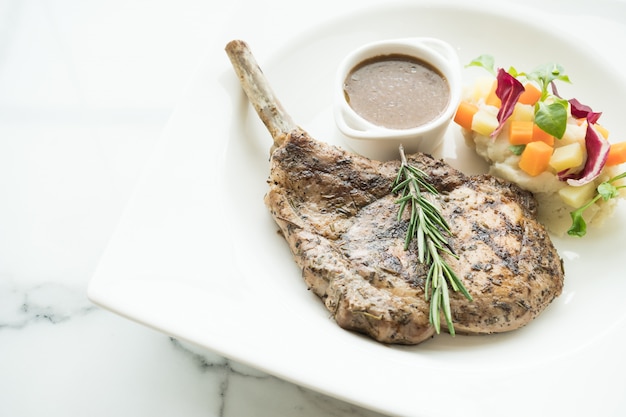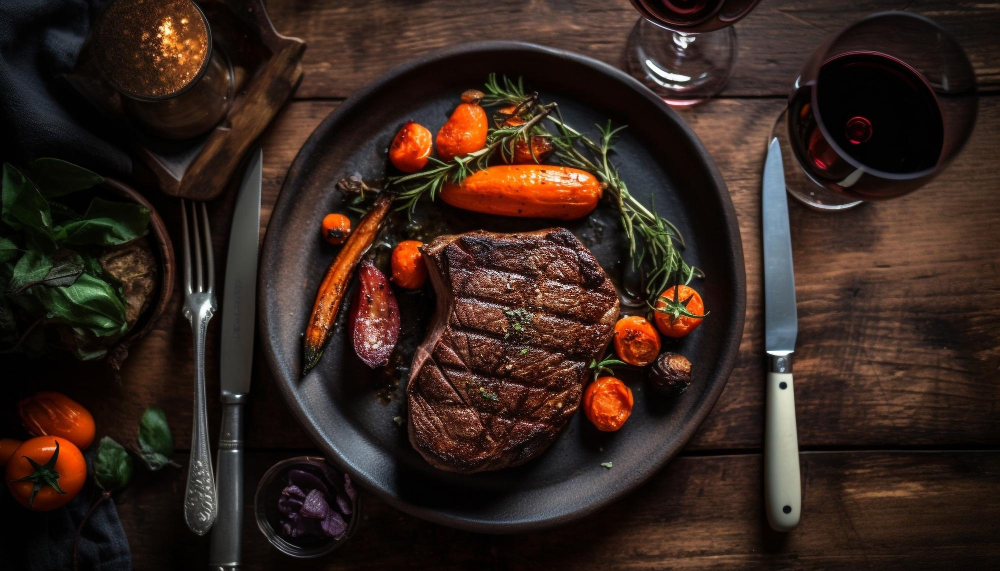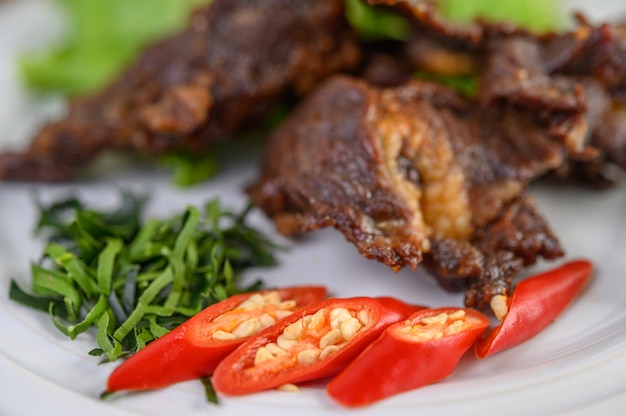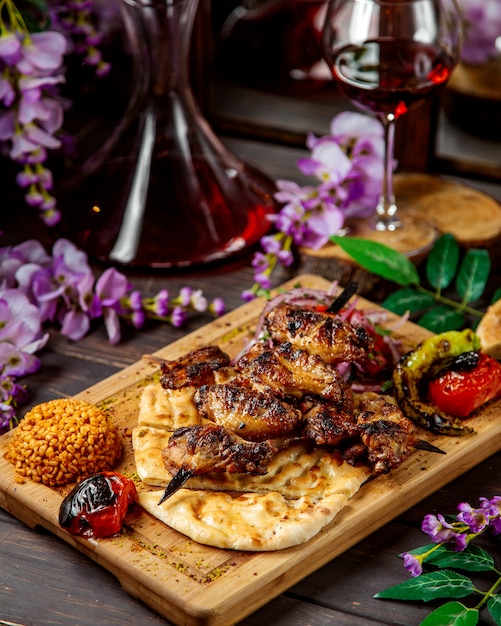How long should you cook lamb for?
When it comes to cooking lamb, achieving the perfect level of doneness can be a bit tricky. Overcooking can lead to dry and tough meat, while undercooking may leave you with unsafe, raw lamb. So, how long should you really cook lamb for? Let’s explore the ideal cooking times and temperatures for different cuts of lamb.
The importance of cooking times and temperatures
Cooking times and temperatures play a crucial role in ensuring that lamb is cooked to perfection. The right balance between time and temperature ensures that the meat is safe to eat while also retaining its tenderness and juiciness.
It’s important to note that these cooking times are general guidelines, and factors such as the thickness of the cut, starting temperature of the meat, and personal preference should be taken into account. Using a digital meat thermometer is recommended to ensure accurate cooking results.
Cooking times for different cuts of lamb
Here are some general guidelines for cooking times for popular cuts of lamb:
Rack of lamb: This tender and flavorful cut is often roasted. For medium-rare doneness, roast at 180°C/350°F for about 20 minutes per 450g (1 pound).
Lamb leg: Roasting is also a popular method for cooking lamb leg. For medium-rare, roast at 180°C/350°F for approximately 25 minutes per 450g (1 pound).
Lamb shoulder: Known for its rich flavor, lamb shoulder is best when slow-cooked. Roast at 160°C/325°F for about 3-4 hours or until the meat is tender and easily pulls apart.
Testing for doneness
While cooking times provide a good estimate, it’s always important to test for doneness before serving. The best way to do this is by using a meat thermometer.
For medium-rare lamb, the internal temperature should be around 60°C/140°F. Medium lamb will have an internal temperature of about 65°C/150°F, while well-done lamb will be around 70°C/160°F.
Resting the lamb
Once the lamb reaches the desired level of doneness, it’s crucial to let it rest before carving. This allows the juices to redistribute, resulting in a moist and flavorful meat.
A good rule of thumb is to let the lamb rest for about 10-15 minutes. Cover it loosely with foil to keep it warm.
How Many Hours Do You Cook Lamb For?
Cooking lamb is a delightful experience that results in juicy and flavorful meat. However, cooking times can vary depending on the cut of lamb you are working with and your desired level of doneness. Here’s a guide to help you determine how many hours you should cook lamb for:
Roasting a Whole Leg of Lamb
A whole leg of lamb is often roasted for special occasions and family gatherings. To achieve a tender and succulent roast, it is recommended to cook it for about 20 minutes per pound at a temperature of 325°F (160°C). This will result in a medium-rare to medium doneness, depending on the size of the leg.
Oven-Baked Lamb Chops or Cutlets
When it comes to cooking lamb chops or cutlets in the oven, they require less time compared to larger cuts. Aim to cook them for around 12-15 minutes at 400°F (200°C) for a medium-rare result. Adjust the cooking time accordingly if you prefer your lamb more well-done.
Slow Cooking Lamb
If you enjoy the melt-in-your-mouth tenderness of slow-cooked lamb, consider using your slow cooker or crockpot. Cooking lamb on low heat for 6-8 hours allows the meat to become beautifully tender and infused with flavors.
Remember, these are just general guidelines, and factors such as the thickness of the meat and your oven’s performance can affect cooking times. Always use a meat thermometer to ensure your lamb is cooked to your desired level of doneness.
Here’s a table summarizing the recommended cooking times for various lamb cuts:
| Lamb Cut | Cooking Time |
|---|---|
| Whole Leg of Lamb | 20 minutes per pound at 325°F (160°C) |
| Lamb Chops or Cutlets | 12-15 minutes at 400°F (200°C) |
| Slow Cooked Lamb | 6-8 hours on low heat |
In conclusion, cooking times for lamb can vary depending on the cut and desired doneness. By following these guidelines and using a meat thermometer, you can create delicious lamb dishes that are cooked to perfection.
How many people will a 1.5 kg leg of lamb feed?
If you’re planning a dinner party or a special occasion and considering serving a delicious leg of lamb, it’s important to know how many people a certain size of lamb will feed. A 1.5 kg leg of lamb is a popular choice for gatherings, but determining the number of servings can depend on various factors.
Factors to Consider:
When estimating the number of people a 1.5 kg leg of lamb will feed, you need to consider the following:
- Serving Sizes: The average serving size for a leg of lamb is around 200-250 grams per person. However, this can vary depending on personal preferences and the other dishes being served.
- Accompaniments: If you plan to serve multiple side dishes and accompaniments, the portion size of the lamb can be reduced, as guests will likely consume smaller portions to accommodate the other dishes.
- Appetites: Consider the appetites of your guests. If they are big meat-eaters or if the lamb is the main dish, you might want to account for slightly larger portions.
Based on these considerations, a 1.5 kg leg of lamb can generally serve around 6-8 people as a main dish, assuming an average serving size of 200-250 grams.
“A 1.5 kg leg of lamb is usually sufficient to feed a small gathering of 6-8 people.”
To ensure you have enough lamb for all your guests, it’s always a good idea to gauge the preferences of your attendees and adjust the portion size accordingly. It’s better to have some leftovers than to leave your guests hungry!
Sample Table:
| Number of Guests | Serving Size (200g) | Serving Size (250g) |
|---|---|---|
| 6 | 1.2 kg | 1.5 kg |
| 8 | 1.6 kg | 2 kg |
It’s worth noting that these estimates are just a guide, and individual appetites may vary. If you have any doubts or concerns, consider consulting with your local butcher or caterer who can provide personalized advice based on your specific requirements.
How Long Does It Take to Cook 1.5 kg of Lamb?
Cooking a delicious lamb roast can be a perfect centerpiece for any special occasion or Sunday dinner. The cooking time for lamb depends on various factors such as the cut, desired doneness, and weight. In this article, we will focus on cooking a 1.5 kg piece of lamb, providing you with some general guidelines to ensure a tender and flavorful result.
Factors Affecting Cooking Time
The cooking time for lamb can vary based on factors such as:
- Cut of Lamb: Different cuts of lamb require different cooking times. For instance, a leg of lamb may take longer to cook compared to lamb chops or a rack of lamb.
- Desired Doneness: The level of doneness you prefer, whether it’s rare, medium-rare, or well-done, will impact the cooking time. A rare lamb roast will take less time to cook than a well-done one.
- Oven Temperature: The temperature at which you cook the lamb also affects the cooking time. Generally, a higher temperature will result in shorter cooking times.
General Guidelines for Cooking 1.5 kg of Lamb
As a rule of thumb, it is recommended to cook a 1.5 kg piece of lamb at 180°C (350°F) in a preheated oven. However, it’s crucial to use a meat thermometer to ensure the lamb is cooked to your desired level of doneness. Here’s a guideline for approximate cooking times based on desired doneness:
Rare: Cook for about 15 minutes per 500g or until the internal temperature reaches 50-55°C (122-131°F).
Medium-Rare: Cook for about 20 minutes per 500g or until the internal temperature reaches 60-65°C (140-149°F).
Medium: Cook for about 25 minutes per 500g or until the internal temperature reaches 70-75°C (158-167°F).
Well-Done: Cook for about 30 minutes per 500g or until the internal temperature reaches 80-85°C (176-185°F).
Remember to rest the lamb for at least 10-15 minutes after cooking before carving. This allows the juices to redistribute, resulting in a tender and succulent roast.
It’s worth noting that these times are just guidelines, and it’s always best to use a meat thermometer to ensure accuracy. Cooking times may vary depending on your oven’s efficiency and other external factors.



